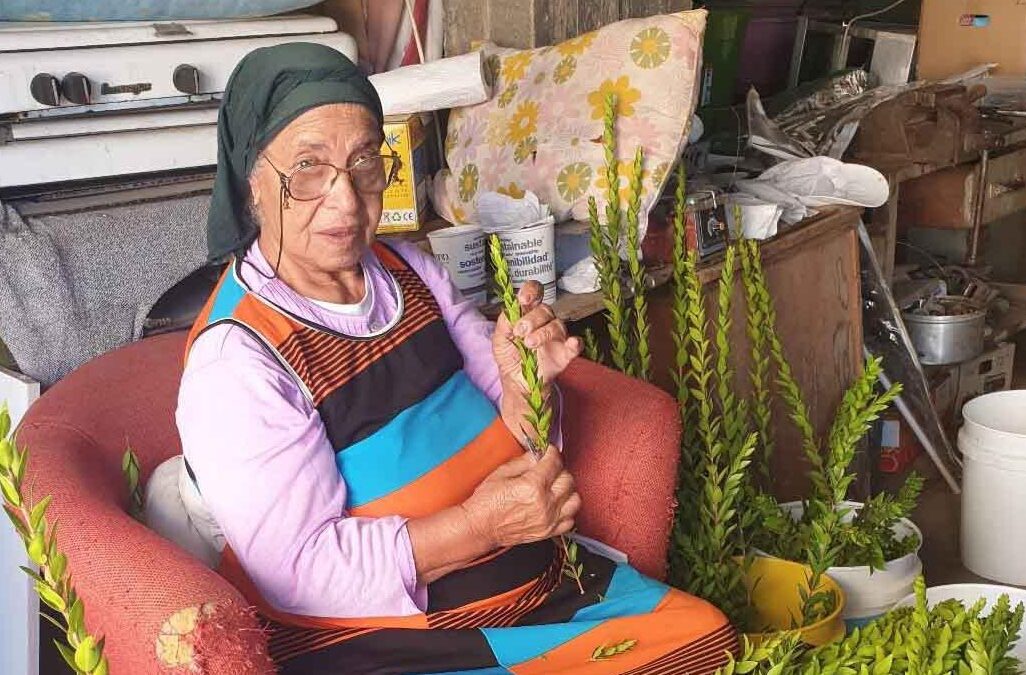
Few and far between are the Israeli farmers who choose to grow palm, myrtle, willow and etrog. These special crops must be carefully cultivated all year round, to be sold over the course of just three to four days in special “Four Species” markets across the country. This Sukkot, these farmers explain to Davar their process in growing the “four species,” so crucial to performing the Sukkot mitzvah of shaking the lulav.
Palm: the date fields of Kibbutz Tirat Zvi
Avner Rotem (46), head of palm production at Kibbutz Tirat Zvi in the Beit She’an Valley, has lived and breathed dates since he was 12 years old, a teenager at the neighboring Kibbutz Shluhot HaShachen.
Nine varieties of dates are grown in the date-palm fields of Tirat Zvi, as well as trees intended specifically for palm branches, or lulavs. 400 dunams (around 100 acres), about a third of the kibbutz’ date-palm orchards, are dedicated to growing Deri lulavim, which originate in Iraq and are highly sought-after.
“The advantage of a lulav of the Deri variety is mainly that the ‘tiyomet’ (the upper end of the lulav) is closed, as it is written in halacha [Jewish law],” Rotem said.
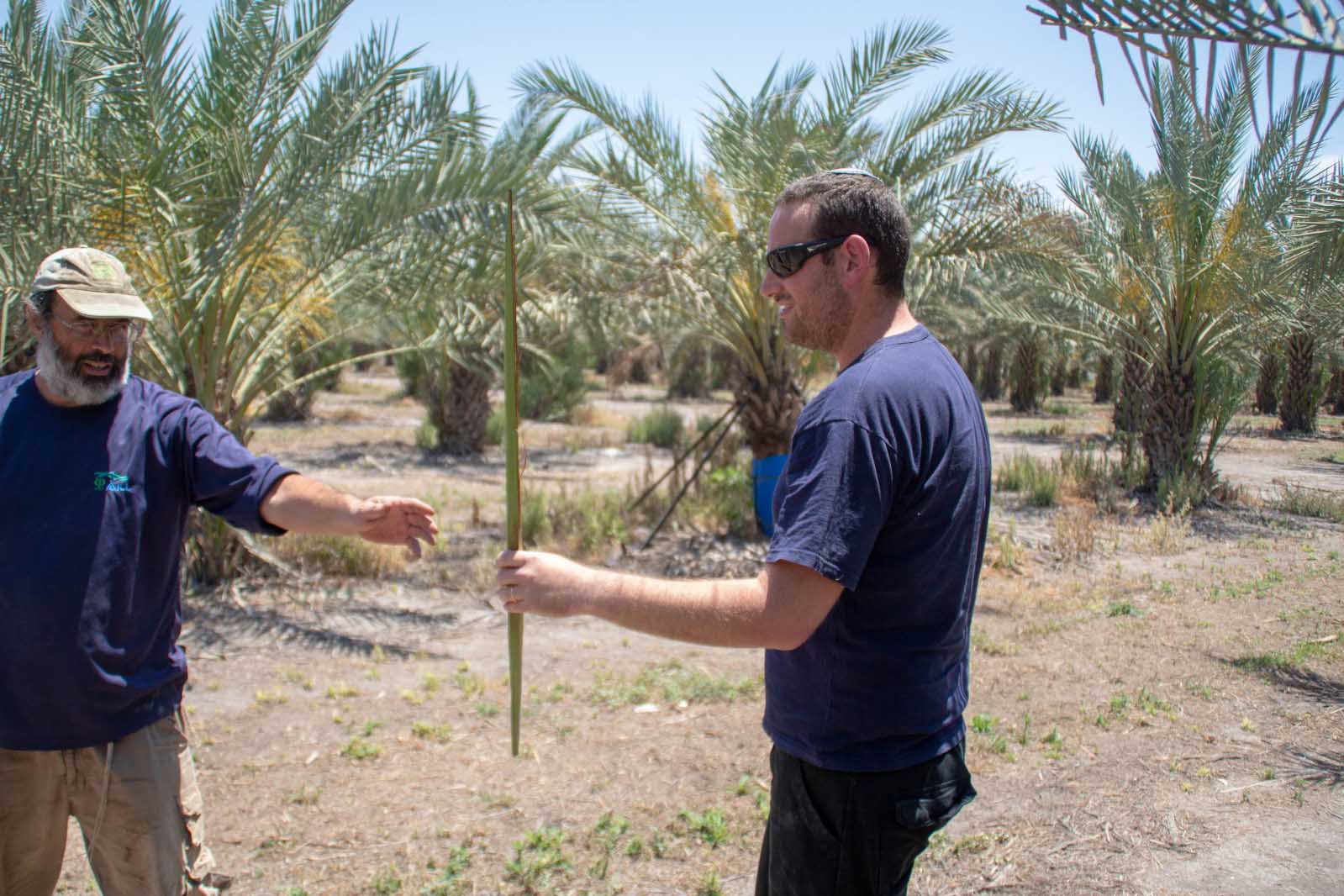
The lulav harvest occurs over the course of about half a year.
“We start harvesting around Purim [usually early March,]” Rotem explained. “The lulavs are kept refrigerated for seven months, until Sukkot. There is a protocol developed for preserving them: dip the lulav in an anti-fungal substance and keep them in refrigerators.”
Every year, about 200,000 lulavim are harvested at Tirat Zvi, with each tree producing 15-13 lulavs.
“We harvest every two weeks. Routinely, we have 40 workers – kibbutz members, students in agriculture from abroad, Thai migrant workers and farm laborers. We also have two retirees who still come to work every day,” Rotem said proudly.
“Teens have not worked at the palm grove picking lulavs since work was restricted to 18 years old and up, but they help out during the sorting and packing period – to weigh, pack and put stickers on the produce. It is definitely better than screens,” he said with a smile.
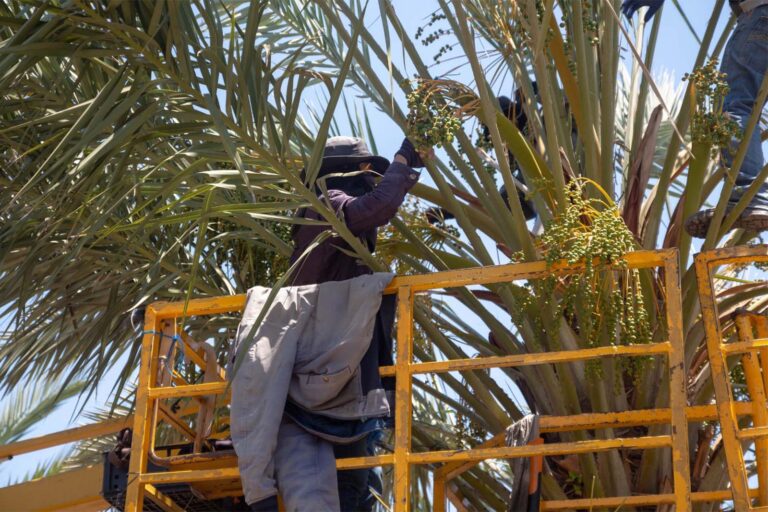
The lulavim are also exported to Europe, South America, Australia and the United States, the world’s second largest Jewish community after Israel.
The Deri lulav ranges in price from 30 to 80 shekels. “Deri Mehudar,” kosher according to the regulations of the Haredi community, sells for 120 to 250 shekels. Lulavim from other varieties are sold at prices between 15 and 80 shekels.
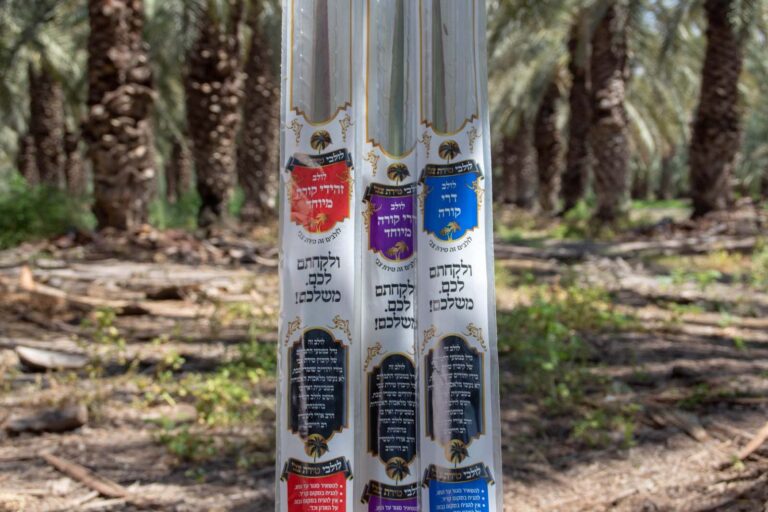
Myrtle: the Nagar family of Rosh HaAyin
“There have always been myrtle trees in the house, since I became aware of myself,” Shai Nagar, a second-generation myrtle grower, said. The Nagar family has a half-dunam myrtle orchard in the yard of their house, mainly tended to by Shai’s 80-year-old parents, David and Sarah.
“It's their baby,” Nagar said. “They get up very early in the morning to water, spray, prune. It's better than sitting at home all day. It gives them meaning, plus our myrtles are considered fancy.”
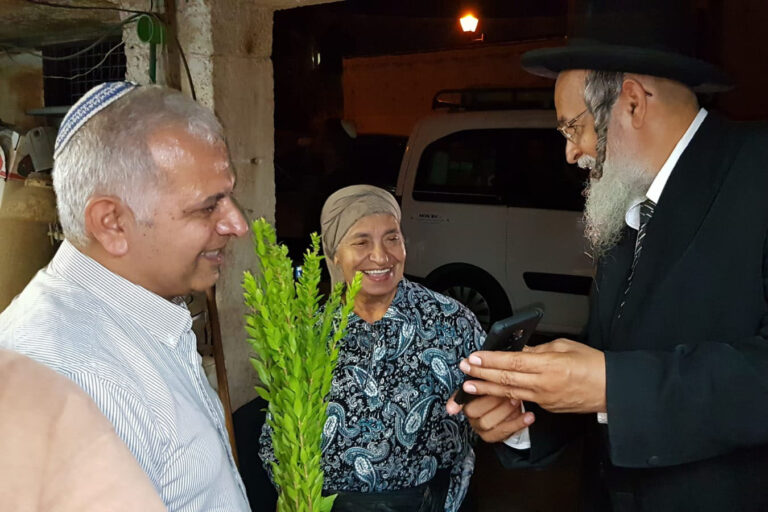
The Nagar couple came to Israel from Yemen and initially worked in agriculture. Over the years, they decided to focus on growing myrtle, teaching themselves in the process. Their myrtle, of the Safed variety, is considered a “boutique” myrtle.
The myrtle is traditionally called a “thick tree branch.” According to halacha, the myrtle branch must have at least three leaves, about 29-24 cm long, at each level of leaves (or “nest”) in order to be considered appropriately “thick.” If there are only two leaves, with the third leaf either above or below them, it is considered a “fool's myrtle,” which is unfit for use in the four species.
The cultivation of the myrtle shrubs begins in the spring, with the harvesting done in the fall.
“We pick right before the sale so that our goods reach the Four Species market fresh,” Nagar said. “During this period, we work hard. Immediately after Yom Kippur, the whole family joins in the effort. We have a total of three to four days to market the goods.”
“Our myrtle branches come to market wrapped in moist cloth, rather than nylon like the regular myrtles,” Nagar continued. “We place them in our stand one by one in dishes with water, and the compilers [those authorized to create a kosher lulav for sale] hand-select their three preferred branches. We also sell myrtles in pre-ordered sizes.”
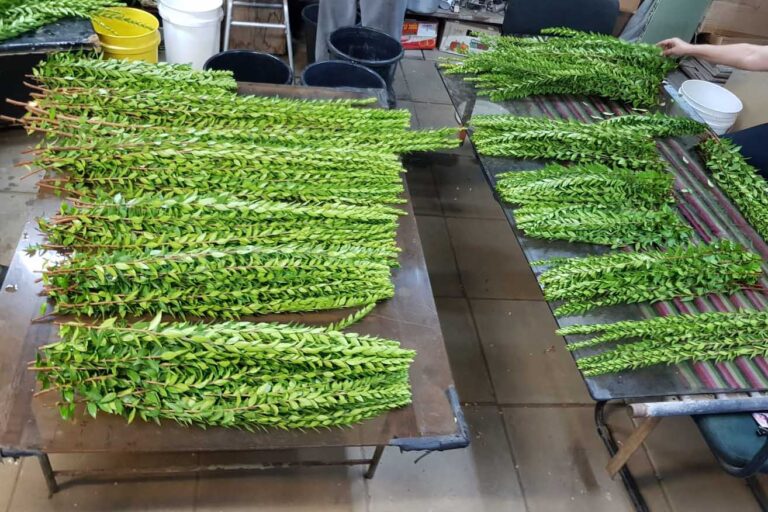
The Nagar family has been growing myrtle for 40 years. They are very well known at the Four Species market in Jerusalem, since the days when the stalls lined Agrippas Street.
“People come especially for us and order myrtle branches from us,” Nagar said with pride. “The Haredi customers recognize my mother from afar and come straight to our stand.”
The price of myrtle ranges from 15 to 120 shekels, depending on the variety and composition.
Willow: backyards around the country
Of the four species, the willow is the most commonly found. In contrast to the palm and myrtle, it is not grown in special orchards, but rather on trees in the yards of private homes. Tree owners prune the branches ahead of the holiday, and bring it to market to sell to the general public.
The willow is associated with two separate mitzvot of Sukkot: the mitzvah of being part of the lulav’s four species, and a mitzvah originating in the Torah – to bring long willow branches to the Temple and place them next to the altar. When the branches were brought, the priests would blow the shofar and surround the altar. On Hoshana Raba (the seventh day of Sukkot), the priests would conduct this ceremony seven times. This created the custom of beating willow branches on the floor on Hoshana Raba.
Willow has no taste and no smell, and a pair of willow branches costs about 5 shekels on average in the markets. A flowering leaf at the end of the willow, known as a “livluv,” raises the price by 50%. Some sellers offer a free replacement of fresh branches in the middle of Sukkot, as willow tends to wither quickly, and is needed at the beginning and end of the holiday.
Etrog: Rabbi Moshe Adrei from Kfar Chabad
The etrog, otherwise known as a citron, is the star of the show. Two million etrogs are grown every year in Israel. One third of them are deemed unfit for use, one third are exported abroad and one third are sold in the local market. 40 etrog growers operate in Israel, one of the oldest of which is Rabbi Moshe Adrei from Kfar Chabad, known as the “King of Etrogs.”
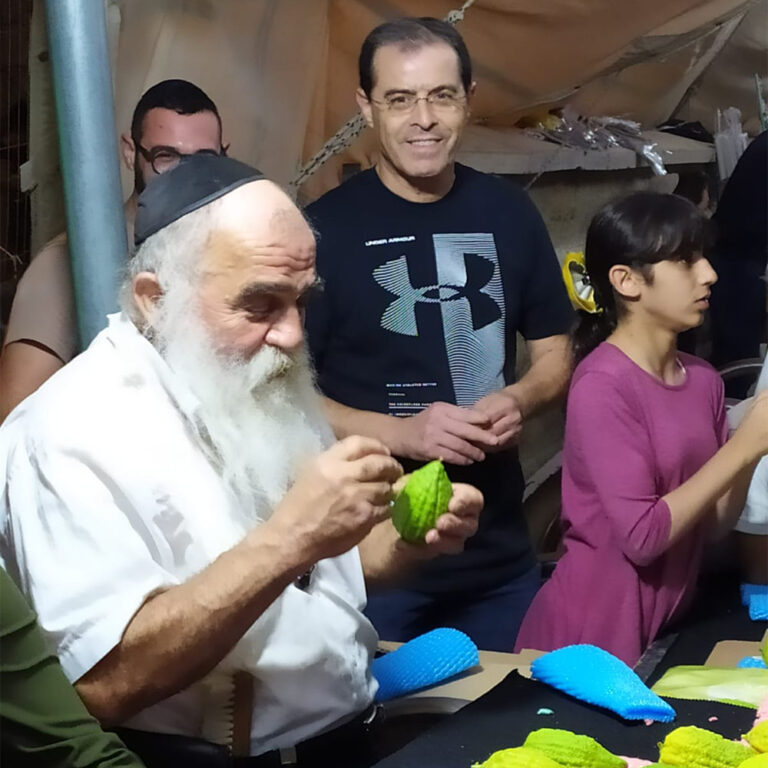
This year, like all others, Rabbi Edrei arrived early in the morning at the Four Species market in Jerusalem. Choosing an etrog is a very important process, as the fruit must be up to snuff.
“When the boxes of etrogs arrive, the masses of buyers are in a hurry to choose an etrog,” Ilan Cohen, a member of the market's management team, explained. “After the large gathering, the etrogs are carefully examined by the Haredi buyers, with a magnifying glass. This is a bit reminiscent of a diamond exchange. Everyone wants to be sure they have the perfect etrog.”
The price of etrog is affected by various variables related to its appearance and integrity. The “pitom,” or stem at the end of the etrog, is central in the choice of etrog. If the pitom is damaged, the etrog is unfit for use. An etrog with an intact pitom costs almost twice as much as a damaged etrog. Stains that form on the etrog from the leaves of the tree (also called blatlech) can reduce its price by at least 50%, even though halachically the etrog is kosher.
The price of the etrog ranges from 25 to 500 shekels for an etrog imported from Morocco or Italy. A particularly elegant “diamond” etrog costs between $100 and $300. Chabad followers may also pay $770 for Italian Calabria etrogs, the kind the Rebbe of Lubavitch, founder of Chabad, used to bless.
The Four Species Market: “Everyone is welcome”
The Jerusalem market had around 50 stalls selling the four species this year. The stands are arranged by species and also by testimony, beliefs and customs.
“The Yemenites and the Sephardim prefer large etrogs and lulavim,” Cohen said. “Ashkenazis like Chabad etrogs, which are the size of an average lemon. They have large and closed lulavim, compared to the favorite lulavim of specific Hasidic sects, which are already open at the time of purchase.”
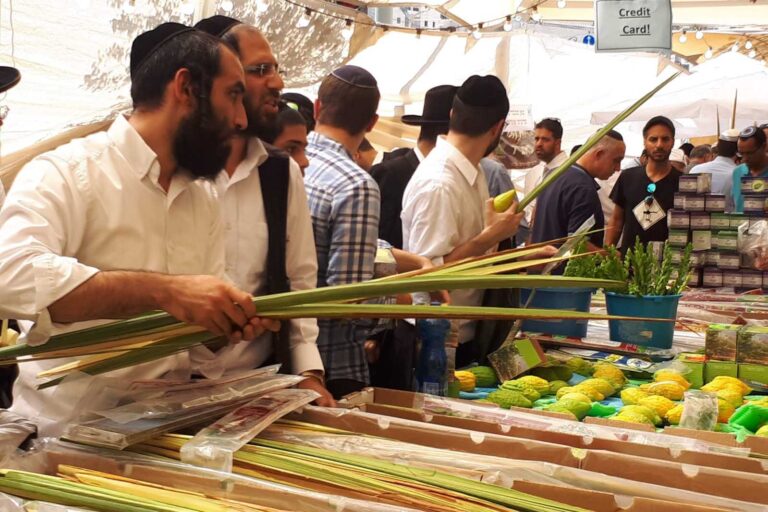
“The market will be in the open air and everyone will be wearing masks,” he emphasized. “Although this year there will not be many tourists from abroad, the market attracts many groups and families of Israelis.”
“Everyone is welcome, without exception,” Cohen went on. “We make sure that no visitor is restricted due to religion or immodest dress.”
Cohen estimates that every year, more than 700,000 sets of the four species are sold in Israeli markets. These markets are open from the end of Yom Kippur till the end of Sukkot.
The prices of the sets, like the prices of the individual species, vary according to different factors. The price of the “education” set, which is intended for kindergarten teachers and schools and is not kosher for blessing, is around 40 shekels; a “kosher for blessing” set costs an average of 60 shekels; a “fancy” set that also includes a holster and koishiklech (a device woven from lulav leaves used to bind the lulav, myrtle and willow together) costs 80 shekels on average; and the price of a mehadrin-approved set starts at 100 shekels and can reach 350 shekels.
For those who are extra serious about their lulav sets, the market also offers “accessories,” such as a holster – a transparent plastic wrap to keep the willow and myrtle fresh (7-15 shekels); a bag with insulated inner padding (between 290 and 350 shekels); And a box for etrog (between 30 and 200 shekels for a fancy box decorated with silver.)






